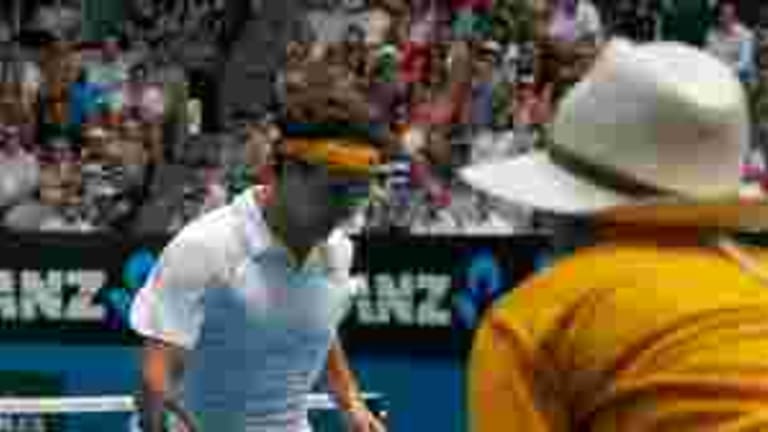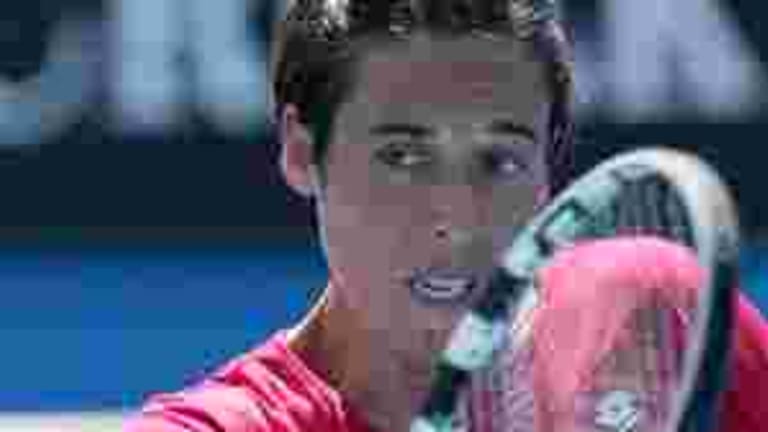Tennis trends can be hard to predict, tricky to launch, and impossible to sustain. Who ever thought that compression shorts would become all the rage thanks to Andre Agassi—and then disappear so quickly in the rear-view mirror? Didn’t some of us also brace for an onslaught of young WTA pros wearing below-the-knee running tights under their tennis skirts, following the lead of Victoria Azarenka?
Mercifully, that one never happened, and not just because most male fans would tell you that, when it comes to Azarenka’s legs, there’s no such thing as too much. But trends aren’t just matters of fashion. Time was, and not so long ago, that the copper bracelet that was said to diminish the chance of incurring elbow problems was a ubiquitous item on the ATP tour.
And who might have imagined that what once was called the “Bucharest backfire”—after the first man to hit the shot regularly in big matches, Ilie Nastase—would morph into the “’tweener”? These days, it seems like even far-flung journeymen spend a lot of time getting a slow start and running wide of a lob in order to fire off a ‘tweener, court position or percentages be danged. “Oohs-and-aaahs” are a lot harder to come by than points, though.
And if nothing else, there’s the very word, “’tweener.” Is there a more lame word in the language?
I rant. Some trends are not just valid (meaning productive and useful), but definitive of the evolution of the game. Count the inside-out forehand at the top of that list, although one of the greatest and most obvious “trends” (if you can still call it that) is the shift to the two-handed backhand. We tend to forget that until the holy trinity of Chris Evert, Jimmy Connors, and Bjorn Borg came along, the two-hander was a much less common stroke. Just think of all the great backhands leading up to that era that began in the 1970s. Margaret Court, Rod Laver, Billie Jean King, Arthur Ashe, Nastase, Jan Kodes, Rosie Casals, John Newcombe, Evonne Goolagong, Ken Rosewall—they all played the backhand with one hand on the handle.
With all that in mind, let’s look at five trends we might spot at the upcoming Australian Open:
1. Diminished grunting by WTA players.
Word is out: Grunting isn’t cool, even if Azarenka and Maria Sharapova are the league leaders at the practice—as well as the top-ranked women. We’ve gone from the point where shrieks and grunts were an amusing, quip-worthy byproduct of women’s tennis to the point where they are—justly and accurately—considered a serious impediment to the popularity, growth, and appeal of the game.
More to the point, more discreet players have been increasingly vocal about their objection to grunting on grounds that go beyond aesthetics and manners to the question of sportsmanship. More and more women insist that grunting qualifies as a distraction that ought not be allowed.
Last year, Sabine Lisicki complained to an umpire at Wimbledon that Bojana Jovanovski’s grunting was distracting and, well, just “too loud.” And one reason Azarenka has been pummeling her former friend Agnieszka Radwanska so mercilessly in recent matches seems to be because of the Polish girl’s much-publicized criticism her grunting last year.
Now that the WTA has announced that it’s taking the grunting issue seriously, look for a gradual lowering of the volume on those ecstatic ululations and war cries.

